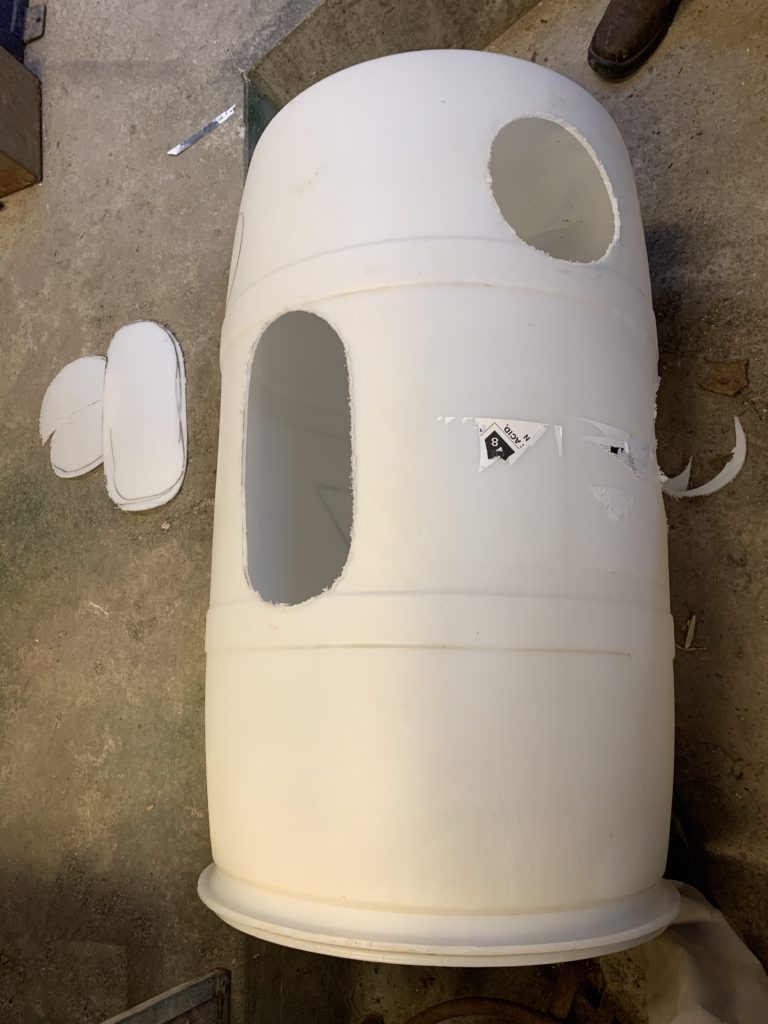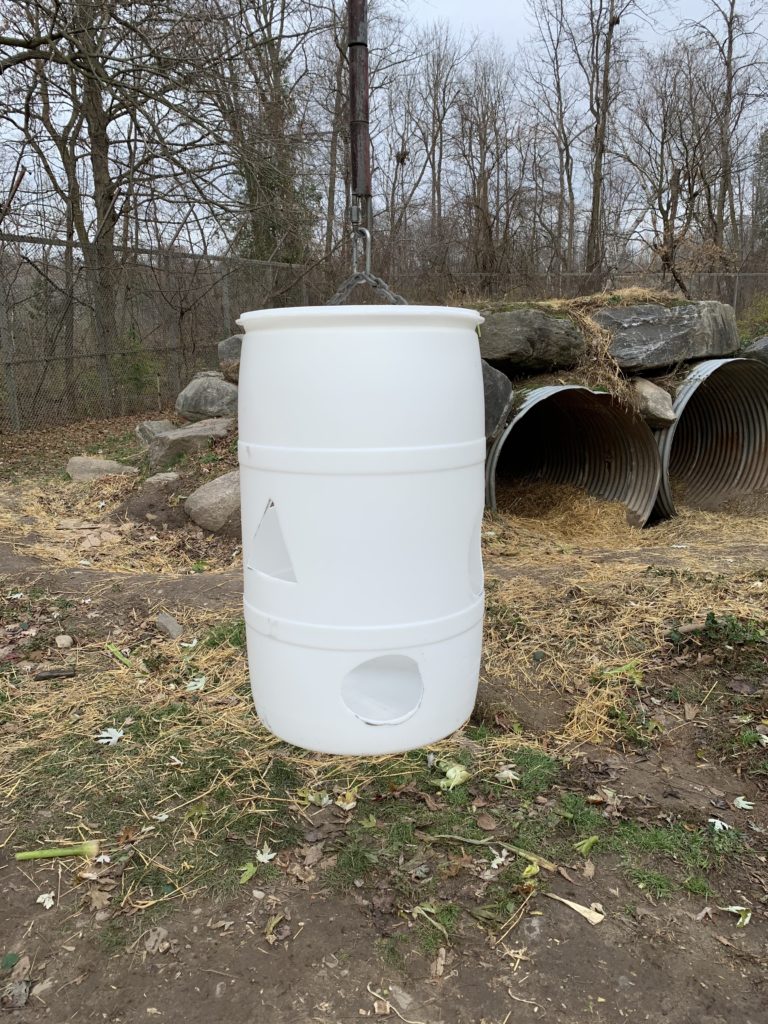We haven’t done one of these build articles in a little while, so I figured I’d come back with something simple, useful and fun! This hanging food enrichment barrel is simply a large 50 Gallon plastic barrel with some holes cut into it. The barrel is then hung in an exhibit to act as a sort of puzzle feeder as the animal using it
Building Materials
- 50 Gallon plastic barrel
- Chain
- Jigsaw or hand saw
- File or Knife
- Pliers
- Straight edge
- Sharpie
- Drill with 1/2″ drill bit
- Quick link
Building Steps
- The first step in building this Hanging Food Enrichment Barrel is to get your plastic barrel and take the end caps out using a pair of pliers or a knife. These caps can fall out and removing them will not only make the barrel easier to hang later but it will reduce the risk of choking on them.
- Next, you can get your straight edge and your sharpie and start to draw out some shapes that you want to be cut out of the barrel. Keep in mind the animal that you are making this for and be mindful that you do not leave holes that could result in the animal getting their feet or heads stuck.
- You can now use your jigsaw or hand saw to cut out the shapes that you drew on the barrel. You can start these lines by using the drill to drill a hole for the blade to go into initially.
- Once your shapes are all cut out you can then use a knife or a file to get rid of all the shavings and sharp edges around your holes that the cutting may have left.
- You are now ready to hang your barrel! To do this, simply take a length of chain and feed it through the holes in the top of the barrel and secure the chain safely with a quick link.

Cutting holes in the Barrel 
Barrel hung and ready for food
Tips/ Comments
Keeping the holes in the barrel away from the bottom of the barrel makes this enrichment harder to use as most of the items inside won’t just roll out easily. Play around with hole placement and see what works best for the animal you intend to use this for.
